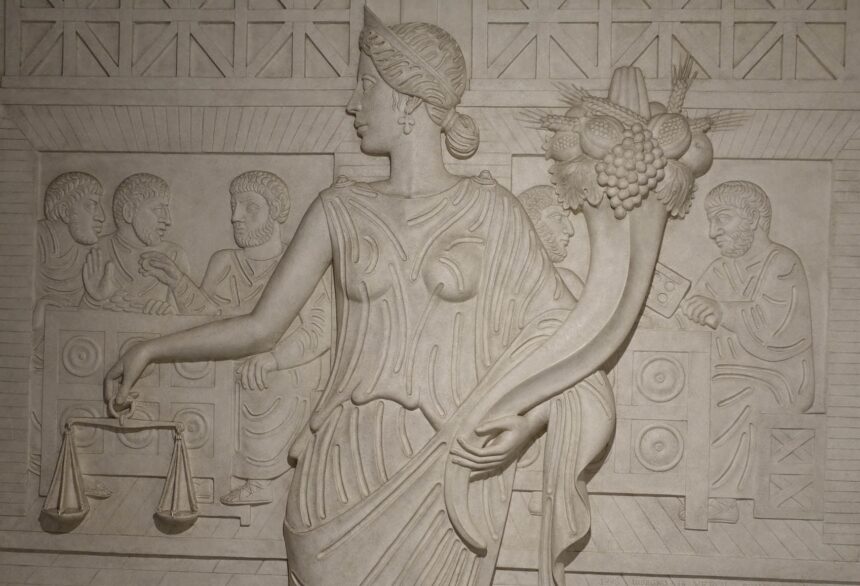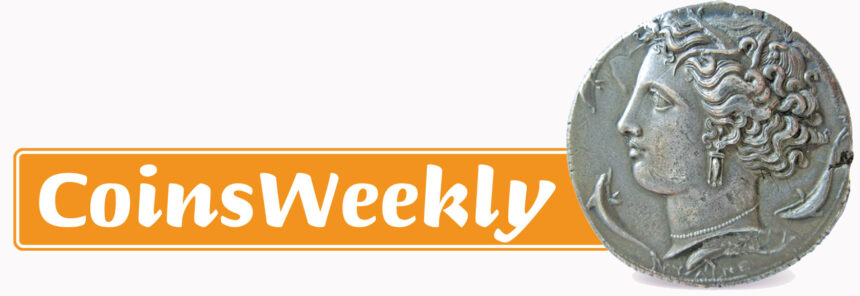The first coin minted in Cologne!?
The new RIC has completely disrupted the coinage of Postumus. This gives a new meaning to an Antoninianus from 268 AD, which was certainly minted in Cologne: it is now one of the first coins ever minted in Cologne.
In 1941, a young numismatist published a book that exemplified what the Vienna School was striving for: Georg Elmer reconstructed the minting plan of the emperors of the Gallic Special Empire in a brilliant catalogue. The scientific world was so fascinated by the quality of his work that for decades it failed to question a fundamental assumption of the book: Georg Elmer had recognised, on the basis of stylistic criteria, that there had been three mints under the Gallic emperors. He divided the coins between Cologne, Trier and Milan. He identified Cologne as the most important and longest-operating mint. He believed he could deduce this from a few coins whose inscriptions refer to the Roman name for Cologne, Colonia Claudia Ara Agrippinensium. Jerome Mairat shows in the new edition of RIC V.4 from 2023 that this inscription can also be interpreted differently.

What can be seen on the Antoninianus of Postumus from 268?
The obverse shows a completely unremarkable portrait of the emperor: the bust of the bearded Postumus is clad in armour, draped with a general’s cloak. Postumus’s radiate crown indicates that this coin is a double denarius. We know these coins by their modern name, Antoninianus. The inscription reads IMP C POSTVMVS P F AVG, which translates roughly as Imperator Caesar Postumus, pious and fortunate Augustus.
The reverse bears the legend CCAA COS IIII. COS IIII refers to Postumus’ fourth consulate. Researchers have long debated whether he held this office in 266, 267 or 268. Today, based on the coinage, the tendency is to date it to 268.
As mentioned at the beginning, the letters CCAA stand for Colonia Claudia Ara Agrippinensium, loosely translated as City of Roman Law of the Agrippinenses, founded by Claudius at the altar [for the imperial cult]. Those responsible for the coin design chose a female figure holding scales in one hand and a cornucopia in the other. These attributes identify her as Moneta, the incarnation of Roman coinage.
Why is the Antoninianus of Postumus from 268 the first coin minted in Cologne?
Thanks to the authority of Georg Elmer, for many decades no one questioned that most of Postumus’ coins were actually minted in Cologne. Researchers now see things differently. Based primarily on an archaeological discovery made in 2005, they believe that there was an active and important mint in Trier under Tetricus. Hoards of coins also indicate that Trier was already minting coins at the time Postumus seized power. This led to a change in the location of the mints. Most of what was previously attributed to Cologne is now believed to have been produced in Trier.
This gives the two types of Antoninianus coins, which refer to the Cologne mint in their inscriptions, a whole new meaning. They are now the inaugural coins with which the Cologne mint began its work. Mairat assumes that Postumus founded the

additional mint in Cologne in 268. To this end, employees of the Trier mint travelled to Cologne.
We do not know what led to this decision. We can only observe that the silver content of the Antoninianus coins decreased dramatically from mid-268 onwards. This has led to the conclusion that Spain, with its rich silver mines, fell away from Postumus in 268. Did Postumus want to use the additional coins minted to finance a campaign to Spain in order to recapture the important province? This is, of course, nothing more than an unfounded hypothesis, as we have no sources that tell us more about the reasons for establishing a new mint.
The Antoninianus offered by Künker commemorates the reopening of the Cologne mint. It is thus part of the first issue produced in Cologne. Two of the types minted at that time refer to this opening. They depict Moneta and explicitly assign her to Cologne with the abbreviations COL CL AGRIP and CCAA respectively.
What is the first Cologne coin worth?
Künker valued the Antoninianus of Postumus at €1,500. This is the price at which other auction houses also valued this coin. However, the results were quite different. On 7 November 2024, a coin in only slightly better condition fetched €5,500 + premium at the Dr. Busso Peus auction house in Frankfurt. In 2016 – i.e. before the big price increase during the coronavirus pandemic – a comparable coin sold for €3,400 at Jacquier in Kehl.
Both auction houses (still) assume that this is merely the first coin on which Cologne’s name is explicitly visible. It will be interesting to see whether its new significance as the first Cologne coin will be accompanied by a price increase.
Click here to go directly to eLive Premium Auction 435 with coins from the Gallic Special Empire from the collection of Dr. Carl Friedrich Zschucke.
Here is the link to all the live and eLive Premium Auctions of the winter auctions.
This link takes you directly to the lot we are presenting.
Texts and images: Ursula Kampmann

